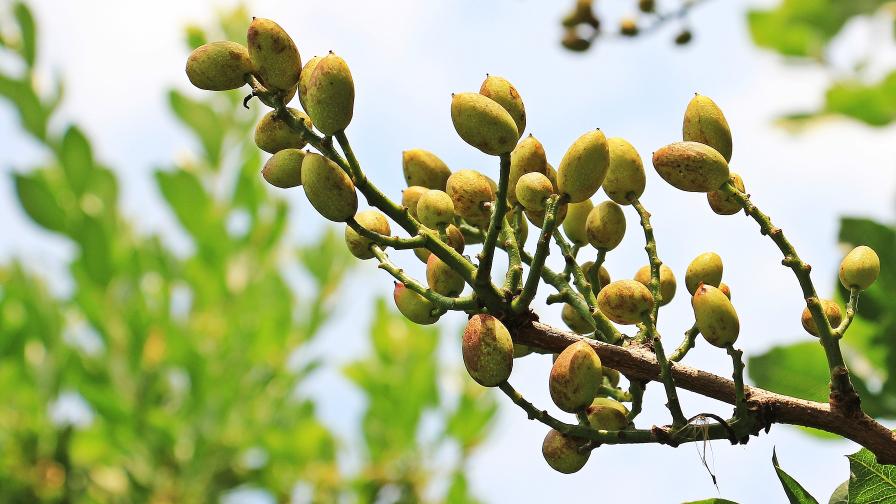Grape Advice: Keeping Vine Mealybug and Leafroll at Bay
While the battle against vine mealybug (VMB) continues in California vineyards, the state’s grape growers, thanks to insect researchers like Kent Daane, have at least been able to keep the invasive pest at bay. “This is a project that’s been going on for almost 25 years,” Daane, a University of California, Berkeley, Cooperative Extension Specialist, says. “In fact, it’s really a little bit disappointing that I’ll be ending my career without feeling like I got ‘the answer’ for this pest, but we certainly have more tools now.”
Daane has worked for UC Berkeley for nearly 40 years, so more than half of his career has dealt with VMB. Currently, he says, there are no VMB controls — no insecticides, no mating disruption, and no natural enemies — that provide 100% removal of the pest so a combination of controls must be used.
Nonetheless, upon reviewing past monitoring data, Daane reminded himself that when he first started using pheromones for monitoring in 2000, he was easily getting male VMB counts of 500 to 1,000 per week and today those numbers are much lower.
“So, we have lowered the population,” Daane says — just not enough to provide economic control for grape growers who have to deal with the vine mealybug-transmitted viruses that cause grapevine leafroll.
“Because of leafroll, wine grape growers have been interested in reducing vine mealybug densities to low, low levels,” Daane says. “Basically, your very expensive wine is worth less in terms of value or price when you’ve got leafroll because of the reduction in grape quality.”
Such concern originated in California’s cool-climate regions — Central Coast, Monterey, Napa, Sonoma — but today even the wine grape growers in the hotter and drier San Joaquin Valley are anxious about VMB, Daane says.
“All growers now are worrying about grape leafroll-associated virus in combination with the vitiviruses that are causing sudden vine collapse,” he says.
Natural Enemy Biocontrols
VMB predators, such as lacewings, midges, and lady beetles, are “all great,” Daane says, but they tend to occupy vineyards more frequently when VMB densities are high. “They don’t tend to work great at low VMB densities,” he says.
Meanwhile, parasitoids fare better at low VMB densities, according to Daane. The most common and important among them has been Anagyrus pseudococci, although it too has a “critical downside,” he says.
“Even though in organic vineyards I’ve seen this wasp parasitizing as much as 80% to 90% of the exposed mealybug, it always starts late,” Daane says, typically in May. “The parasite emerges as the mealybug is starting to emerge from underneath the bark and starting to go out and follow the phloem to the leaves.”
Daane first tried to get around this problem by experimenting with large hand releases of A. pseudococci, and smaller hand releases of Cryptolaemus montrouzieri (mealybug destroyer). “We were able to lower mealybug densities,” he says.
More recently he has trialed drones to release the same parasitoids. In 2023 the strategy was not very effective using mealybug destroyer “because we were releasing adults, and they were just flying away,” Daane says.
This year Daane and colleagues repeated the drone releases but with the A. vladimiri. “Anagyrus vladimiri appears to attack will attack smaller mealybug stages than the A. pseudococci that was in California beforehand and is still here.”
What excites Daane is the potential of overseas parasites. In the Mesopotamia region, which may be near the origin of the VMB that is now in California, four parasites that have not yet been widely imported to the U.S. — A. agraensis, A. planococci, A. dactylopii, and A. mirzai — are successfully attacking mealybugs on vines.
“That’s one of our goals in the future — to bring these in,” he says.
Mating Disruption
Along with other UCCE, such as Monica Cooper in Napa Co. and David Haviland in Kern Co., Daane’s team has worked with most of the mating disruption products, including those made by Suterra, Trece, and Pacific Biocontrol. “I like them all. Choose what’s working best for your vineyard,” he says.
Plastic dispensers, aerosol devices, and sprayable and isomate dispensers saturate a field with sex pheromones to reduce and delay mating. They work best, Daane says, when the pest population is low and when used over a larger area, including multiple vineyards.
“Plot size, I think, does matter. While mating disruption can work on an individual plot — a small plot/individual vine basis — the larger the area, the more benefit you’re going to get,” Daane says. “Also, it works better year after year after year.”
Mealybug density is important as well, which is why mating disruption products are best used in combination with a good insecticide program, according to Daane.










